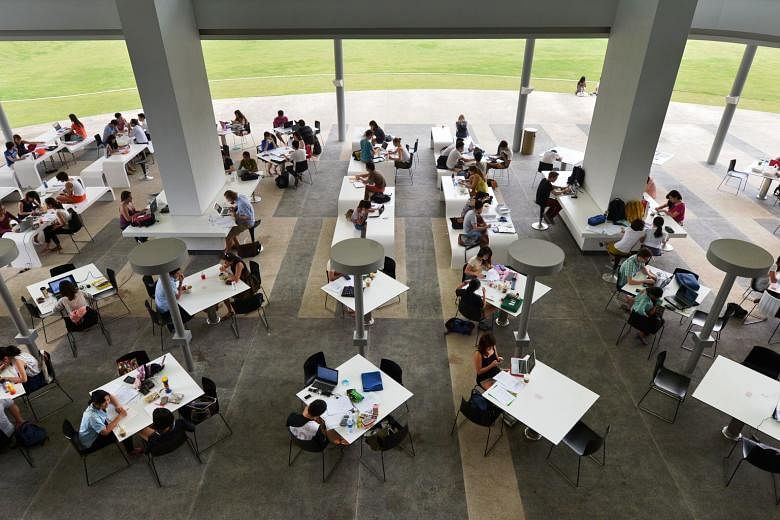SINGAPORE - Disadvantaged students in Singapore fare very well compared to their international peers, but when it comes to comparison within the country, they find it harder to match up to the top performers.
A report by the Organisation for Economic Cooperation and Development (OECD) released on Tuesday (Oct 23) found that Singapore ranks third in the world - behind Macau and Hong Kong - in terms of its share of students in the bottom socio-economic quarter who score well in objective measures of science, maths and reading.
Some 43 per cent of 15-year-olds here from disadvantaged families showed that they had a good grasp of these core skills, compared to the OECD average of 25 per cent.
The 2015 Programme for International Student Assessment (Pisa) test conducted by OECD had also found that about half of Singapore's disadvantaged students emerged among the international top quarter after accounting for socio-economic status, higher than the OECD average of about 30 per cent.
The OECD, which measured three types of academic resilience among students from lower socio-economic backgrounds, said in its report that top-performing countries such as Singapore have larger shares of disadvantaged students who perform better in the core skills of science, reading and mathematics.
But when it comes to "national resilience", which looks at how these students' science scores fared against the top performers in their own countries, only one in 10 of Singapore's disadvantaged students met the mark. This is lower than the proportion in 24 other education systems, including those in Hong Kong and Finland.
Countries with "greater equity in education" have more disadvantaged students who do as well as the top performers in their own countries, the OECD report said.
During a media briefing on Tuesday, the Ministry of Education (MOE) said the OECD findings show that "our students from lower-SES (socio-economic status) homes do very well, both relative to their peers from similar SES backgrounds in other countries and also in absolute terms".
But the bar that disadvantaged students here have to cross in order to be considered "nationally resilient" is much higher, compared to other countries, as top students here perform very well, it said.
For instance, only 10 per cent of students from lower-income families in Singapore obtained a score of at least 631 in the 2015 Pisa test for science. A score of 631 is considered the 75th percentile mark for science for Singapore students.
But in Finland, the bar was lower, as its 75th percentile score was 599. As a result, 14 per cent of its lower-socio-economic students were able to hit this score or higher. Using the Finland benchmark, about 17 per cent of Singaporean "disadvantaged students" would be able to reach a score of 599 and above.

